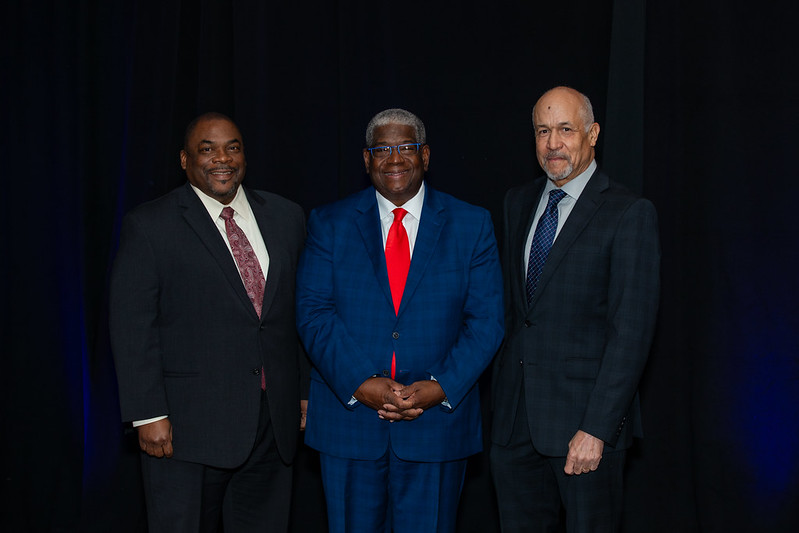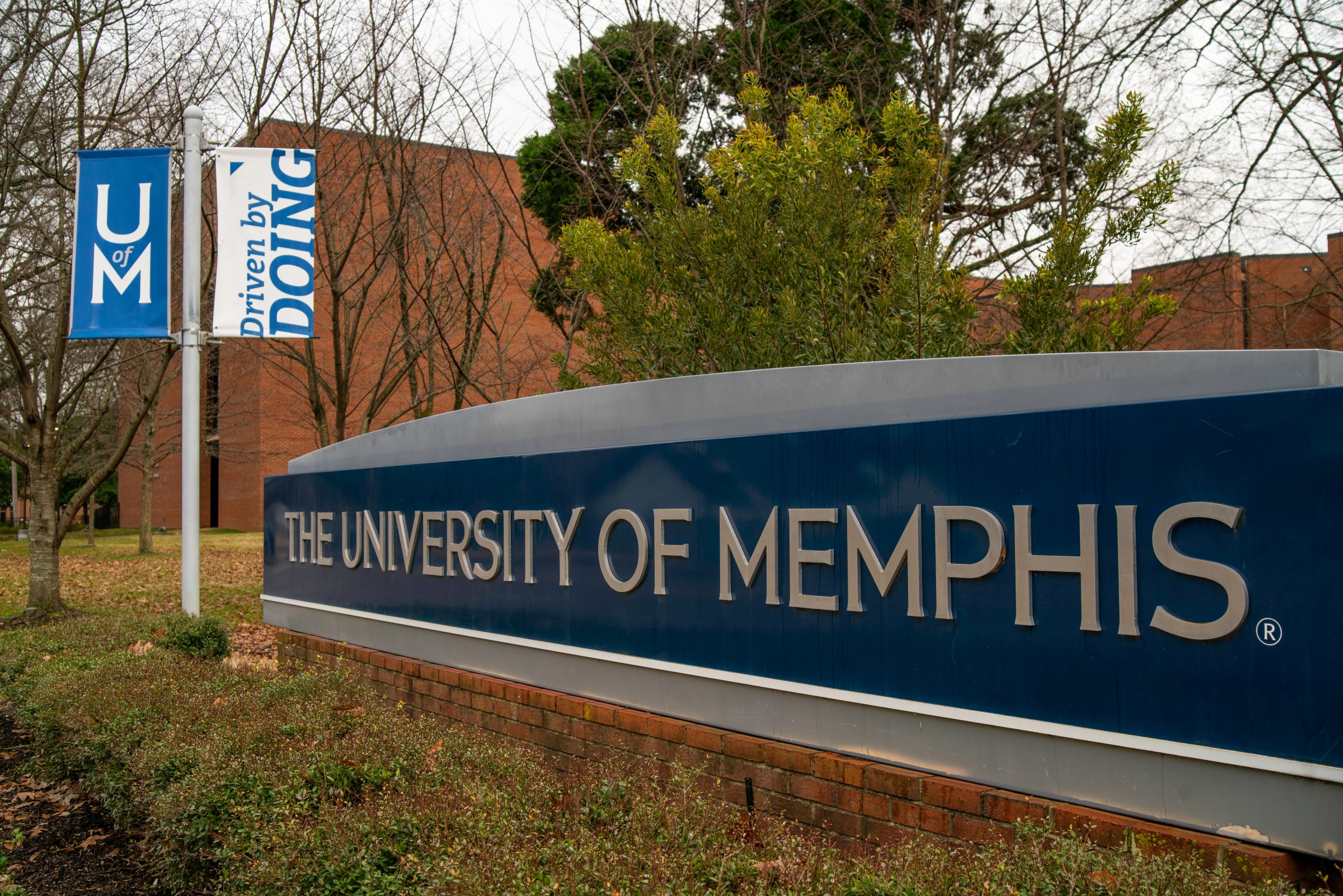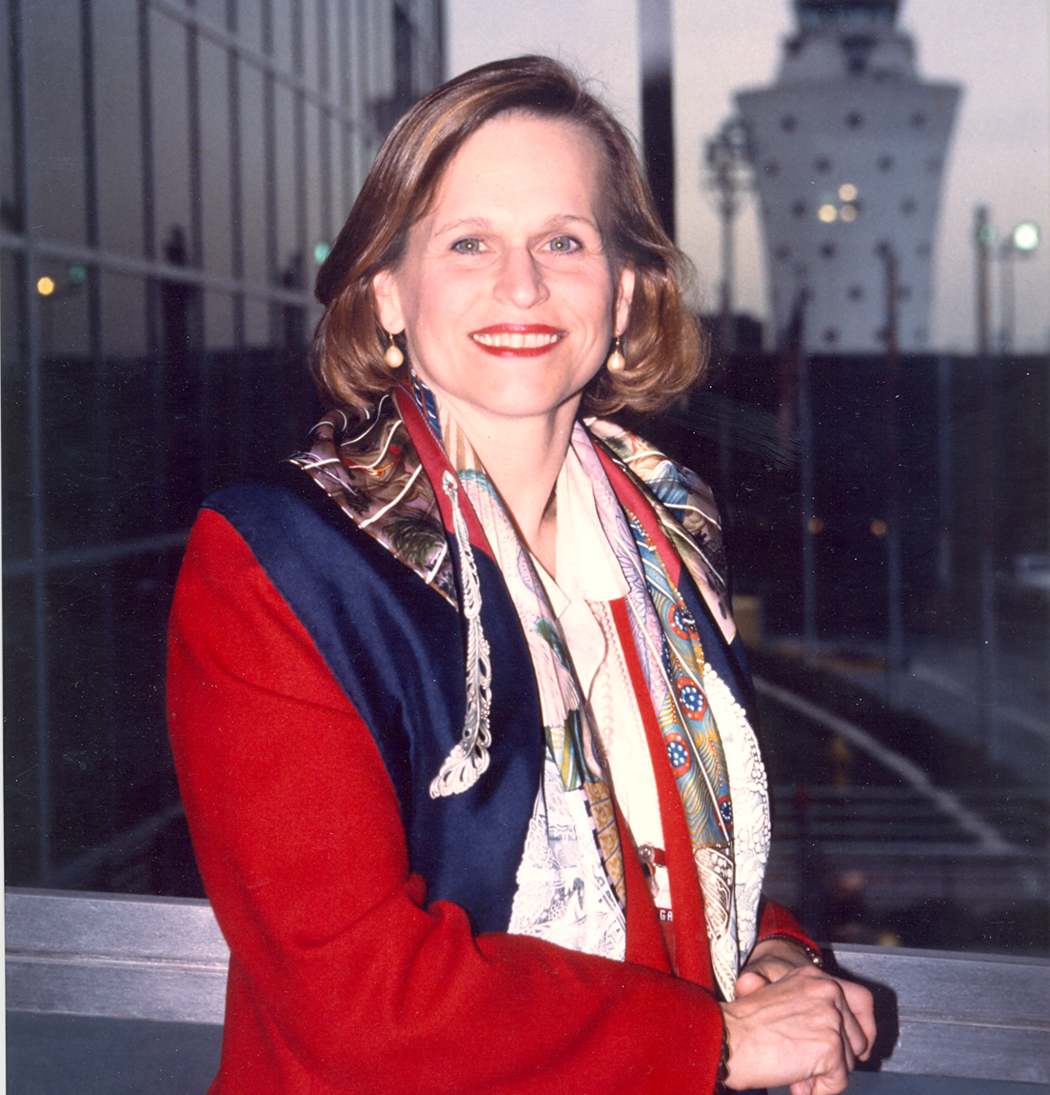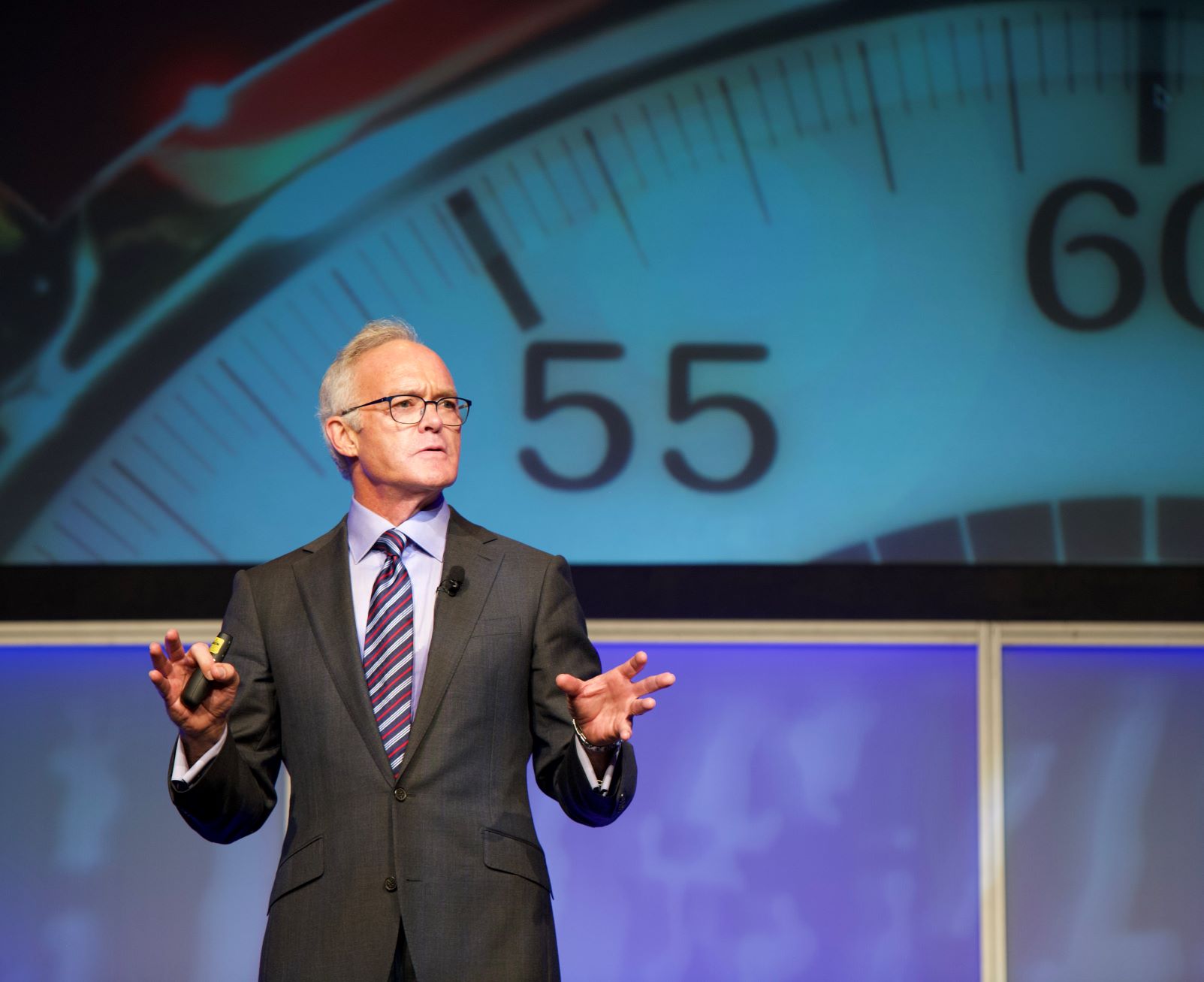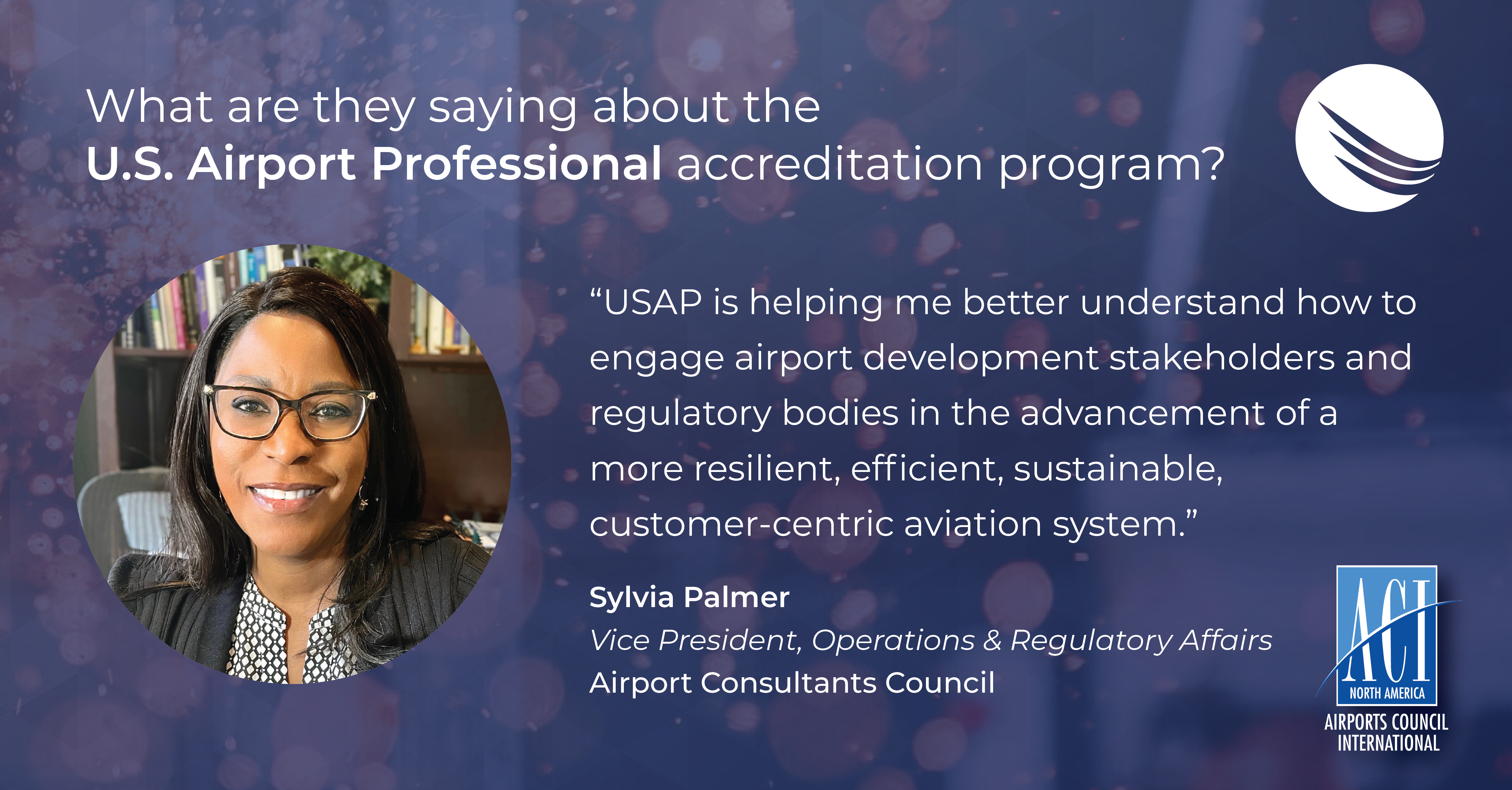By Seth Cutter, Vice President of Industry Affairs, ACI-NA, and Ryan Madsen, Communications Manager, ACI-NA
The U.S. Chamber of Commerce’s Annual Global Aerospace Summit convened top aviation, aerospace, and defense leaders and policymakers in Washington, and Airports Council International – North America (ACI-NA) sponsored this event to highlight the vital role that airports play in the U.S. aviation industry.
This year, ACI-NA President and CEO, Kevin M. Burke, moderated two panels of interest to airports.
Airport infrastructure and priorities in focus: One panel featured Chris McLaughlin, CEO of Dallas Fort Worth International Airport (DFW), Alexis Higgins, CEO of Tulsa Airports Improvement Trust, and Jack Potter, President/CEO of the Metropolitan Washington Airports Authority.
- Burke and these airport leaders discussed the importance of airports to the National Airspace System (NAS) and the effects of aging infrastructure, noting: “airports in the United States support 12.8 million jobs and generate $1.8 trillion in economic output, but we face more than $174 billion in infrastructure needs over the next five years. That’s why modernization is not optional — it’s essential.”
- Potter noted how important it is for all aviation stakeholders to rally behind U.S. Department of Transportation Secretary Sean Duffy and FAA Administrator Bryan Bedford in implementing a brand new air traffic control system; he stressed that “there’s nothing we could prioritize more than modernizing air traffic control. Everyone who flies is dependent on that system working well, and we must make the investments now to ensure the future.” Potter also emphasized that the NAS must be able to provide the capacity for growth demanded by airport users and local communities while ensuring safety.
- Higgins noted the planned 2027 opening of a new tower at Tulsa’s airport, illustrating how a resilient workforce there has found ways to keep air traffic moving safely. McLaughlin also highlighted airport investments in security measures, such as the partnership with TSA at DFW and ATL around One-Stop Security screening, which is being tested with certain airlines for flights inbound from London Heathrow.
All three airport leaders noted the importance of the workforce on airport operations and aviation safety, highlighting the need to build out a talent pipeline for positions beyond air traffic controllers.
Improving the customer experience: The second airport-focused panel focused on efforts to enhance the passenger experience in aviation.
- Thyatiria Towns, deputy commissioner for the Chicago Department of Aviation, highlighted the $1.3 billion investment in passenger facilities at Chicago O’Hare in an effort to enhance the customer journey and Chicago’s community-based approach. “What we do in Chicago is always community-based first — bringing in local artists, small food vendors, and spaces for mom-and-pop shops — while also integrating new technologies to enhance the passenger experience,” said Towns.
- Jason Trojacek, director, digital business solutions, North America, at Avolta, highlighted how technology being used at airport concessions can ease passenger anxiety and deliver digital hospitality. “A majority of travelers experience some sort of anxiety as they go through the airport. Our goal is to use technology to eliminate that friction and keep the traveler at the center of everything,” said Trojacek.
- Heather Garboden, SVP and Chief Customer Officer at American Airlines, stressed her airline’s digital-first approach, explaining how information and experiences are delivered via app and help make airline staffing more efficient, for instance, at check-in and ticket counters.
FAA highlights priorities for ATC reform
Many other aviation stakeholders took the stage, as well. FAA Administrator Bryan Bedford opened the Summit, stressing his call to modernize the agency and highlighting the urgency of and focus on implementing the brand new air traffic control system. He noted that the agency’s 14 business units are heavily siloed. He approaches modernization in three buckets.
- People: FAA’s workforce is fatigued, and the NAS is at a saturation point. Congress’ approval of $12.5 billion in the One Big Beautiful Bill Act is a needed downpayment for ATC modernization, but efforts to supercharge FAA hiring are critical; more funding will be needed.
- Technology: The NAS largely runs on a decades-old analog system; a digital architecture is needed, and this is where Congress’ help will be important. Bedford noted 4,500+ FAA facilities connected by copper wire that need to have fiber wires laid. Permitting for this work and upgrading technology must be streamlined—all while operating the current system safely.
- Airspace Redesign: FAA tries to keep pace with industry’s cycle of innovation, but—especially with advanced air mobility (AAM) and other new entrants, like eVTOLS—the innovation cycle is faster, and FAA must be agile. Commercial space flight, drones, counter UAS, supersonic aircraft, and more demand new ways of thinking of how airspace is managed.
Congressional leaders support aviation industry priorities
Congressional leaders were also featured at the Summit.
- U.S. House Transportation & Infrastructure Committee Chair Sam Graves (R-MO) and Ranking Member Rick Larsen (D-WA) reiterated their committee’s bipartisan work to support DOT and FAA in the overhaul of the air traffic control system, with Graves saying ‘everything’ needs updating. Larsen noted the urgency of the task and indicated a desire to spend what money Congress appropriates on equipment and systems, and not consultants. Both leaders also stressed new entrants in AAM, noting that last year’s FAA Reauthorization Act demands innovative thinking; they underscored that safety is their committee’s fundamental priority.
- U.S. Congressman Troy Nehls (R-TX), chair of the House Aviation Subcommittee, also stressed the importance of ATC reform and new entrants, specifically Boom Supersonic. He said reforms to NEPA processes to cut regulation are vital.
- U.S. Senator Jerry Moran (R-KS), chair of the Senate Commerce Subcommittee on Aviation, noted the significant investment in air safety following January 29 but also noted concern about tariff impacts on the industry and the importance of workforce training and mental health resources—especially for the demanding work of air traffic controllers.
- U.S. Senate Commerce Committee Chair Ted Cruz (R-TX) discussed the importance of American leadership in aviation, space, and technology, highlighting Congress’s commitment to ATC reform via the $12.5 billion downpayment from this summer’s legislation.
Other speakers echo focus on ATC reform, workforce development, and more
Other aviation stakeholders, ranging from airline CEOs to local leaders, addressed topics important to airports and the industry.
- Tom O’Leary, CEO of JetZero, stressed the importance of working with stakeholders, including airports, in moving projects forward that will shape the industry’s future; he noted the $4+ billion investment his company is making in a manufacturing facility in Greensboro, North Carolina, at Piedmont Triad International Airport (PTI) as an example of this collaboration.
- Ross Perot Jr. stressed the importance of American leadership and innovation in aviation. He gave an account of how the Alliance Airport in Fort Worth, Texas, came together quickly—both as an idea and then to be built—as a public-private partnership.
- Louisville, Kentucky, Mayor Craig Greenberg discussed innovative workforce development solutions, such as Academies of Louisville, that provide training for career pathways serving in-demand jobs in STEM, manufacturing, logistics, and beyond.
- In an Air Cargo Outlook panel, Captain Houston Mills with UPS stressed how important AI may be to innovating logistics and global supply chains.
- A panel with leaders from Airlines for America, the National Business Aviation Association, and others talked about the industry’s unity around air traffic reform via the Modern Skies Coalition, of which ACI-NA is part, as well as the importance of aviation to the American economy—highlighting that aviation manufacturing being a global business has helped stakeholders understand the impact tariffs may have on the industry.
It’s a unique time in U.S. aviation—a doubling down on the need to modernize, a focus on the workforce needed to support the safe and efficient operation of the NAS, and new entrants promising continued innovation. Now more than ever, the Voice of Airports® must remain a vital part of the conversation, as it was at the Summit this week.



